A bomb in every download
On 30 July 2010, WikiLeaks uploaded a file named ‘insurance.aes256’ to the Internet. The file was 1.4 gigabytes in size – large enough to hold a mountain of leaked documents – and encrypted with a 256-character key strong enough to have the US National Security Agency’s approval for use to secure classified documents. It was also copied to dozens of USB sticks and mailed out to a cadre of WikiLeaks supporters around the world. In a letter enclosed with the USB sticks, WikiLeaks said that ‘insurance.aes256’ contained an encrypted archive:
Distribution will make sure that no matter what happens, this information will be disclosed to the media and consequently the general public. It will also serve as insurance for the well being of our project and us. If anything goes wrong, a second mechanism will make sure that the keys for this material will be distributed publically, enabling you to decrypt the archive and help make sure it wasn’t all for nothing.
The ‘insurance.aes256’ file was uploaded four days after the WikiLeaks publication of the Afghan war logs and five weeks after the arrest of Private Bradley Manning, the US Army soldier alleged to have leaked those and other military and diplomatic secrets. Wiki-Leaks has not detailed what secrets are locked away behind the AES256 algorithm, but the signal broadcast by the posting of ‘insurance.aes256’ is crystal clear: if you bring down WikiLeaks, the encrypted file, together with all its contents, will be released into the wild.
Ten months on, ‘insurance.aes256’ remains under encrypted lock and key, orbiting cyberspace like an information bomb awaiting activation.
Is it any wonder that Julian Assange – the founder and editor-in-chief of WikiLeaks – has been called everything from the ‘James Bond of journalism’ to a ‘cyber-terrorist’ to the L. Ron Hubbard of online media to an ‘alpha-wolf’ with a messiah complex to ‘the most dangerous man in the world’?
Judging by past WikiLeaks actions, Assange’s opponents – primarily the US government, with what appears to be the tacit support of the Australian government – should take the threat of ‘insurance.aes256’ seriously. Since WikiLeaks went live less than five years ago, Assange has consistently shown himself to be a man unlikely, perhaps unable, to walk away from a fight. Just ask the Church of Scientology.
In 2008, WikiLeaks published a cache of Scientology memos and documents detailing the church’s heavy-handed public relations methods. The church’s lawyers – who have earned a fierce reputation in media circles – promptly wrote to Assange, demanding the removal of the leaked documents and the release of Internet logs relating to the upload of the leaked documents. WikiLeaks didn’t flinch. It labelled the Scientology correspondence ‘attempted suppression’, and published several thousand more pages of leaked Scientology material in retaliation.
At times it is difficult to know whether to admire Assange’s brinkmanship or be vexed by his lack of judgement. Either way, arguments about the merits of Assange’s crash-or-crash-through style of leading WikiLeaks, or the motivation behind the Swedish attempt to extradite him from Britain, or the bona fides of the sex charges he faces, are peripheral. At its root, the battle over WikiLeaks is all about information – who owns it, who controls it, who needs it – and about one man’s idea to free it through the creation of an electronic commons.
This tug-of-war over who controls our information has repercussions beyond the confines of cyberspace. Every day, the users of electronic communications leave behind an El Dorado of data. Last year, YouTube users uploaded thirty-five hours of video every minute; during the popular uprising in Egypt in February more than twenty-three million photographs were uploaded to the Web from Cairo’s Tahir Square; and by 2013 it is estimated that Internet traffic will hit fifty-five exabytes per month – the equivalent of ten billion DVDs of information. In this age of corporatised nations and multinational corporations, that data will not only be closely monitored and mined, it will also be stored for as long as there is enough electricity to power a hard drive. What we are facing is a digital future that is both tantalising and troubling.
For ‘tantalising’, consider the case of University of Western Australia archaeologist David Kennedy. Kennedy made headlines earlier this year when he discovered two thousand potential archaeological sites in Saudi Arabia by sitting in his Perth office, logging onto GoogleEarth, and carefully studying the information contained in the satellite imagery.
For ‘troubling’, consider the virtual omnipotence of Google. As Kennedy’s virtual forays into Saudi Arabia illustrate, the secret of Google’s success is the elegant way it retrieves and presents the treasures of the digital world, covering everything from video to images to webpages to books to email to satellite maps. However, as Siva Vaidhyanathan points out in his new book, The Googlization of Everything (2011), Google’s core business is all about consumer profiling. ‘Google,’ Vaidhyanathan concludes, ‘is a black box. It knows a tremendous amount about us, and we know far too little about it.’
Make no mistake, our daily lives are being recorded and turned into information that could – without proper controls and safeguards – become nothing more than tools for commerce and control. The trouble is, as Marshall McLuhan pointed out in 1962, we are yet to come to terms with the possibilities of electronic communications:
We are today as far into the electric age as the Elizabethans had advanced into the typographical and mechanical age. And we are experiencing the same confusions and indecisions which they had felt when living simultaneously in two contrasted forms of society and experience.
If our age truly is all about information, we must realise that our personal information is now a commodity; that, as science writer James Gleick puts it in The Information: A History, a Theory, a Flood (2011), ‘information is what our world runs on: the blood and the fuel, the vital principle’.
Of course, the desire to access and control information is not new; as Sir Francis Bacon wrote in 1597, ‘knowledge itself is power’. What is new is the changing nature of information itself. Just as the invention of the Gutenberg press transformed Western civilisation from an oral to a predominantly written culture, the Internet – through the ubiquity of video – is in the process of transforming our global civilisation from a written to a hybrid written-oral-visual culture. What could once only be passed on via word of mouth or handwritten proclamation or the printed page can now be broadcast instantaneously via text, audio, or video – and stored for a digital eternity.
What is also new is that at present – unlike during the Vietnam War – the media seems unable to fulfil its democratic role of finding the stories that need to be told, and telling them. For instance, it is likely that at least one journalist, Washington Post reporter David Finkel, saw the raw vision of a US Apache helicopter shooting more than a dozen people, including two journalists, in Iraq in 2007. That raw vision later became WikiLeaks’ ‘Collateral Murder’ video. Why, then, did Finkel report only from the perspective of the US soldiers? What did Assange see that Finkel missed? Has the mainstream media become so embedded that it can no longer see the story?
The point I am driving at is this: WikiLeaks has not come out of the blue. It is a product of our time and would not have succeeded without the climate created by the corporatising of information and the ‘war on terror’. Governments increasingly want to control information, corporations increasingly want to own information, and the media is increasingly unable to give the public the information that they need. WikiLeaks, as an electronic commons for free information, is a way around that undemocratic information lock.
My interest in information stems from the six years I spent living in Northern California. I arrived in 1995, at the start of the Internet boom, and departed in 2001, just after the tech bubble burst and before the terrorist attacks of 9/11. During my time there, I spent the weekends with my wife in a one-bedroom apartment on the sixth floor of 2414 Telegraph Avenue, Berkeley, overlooking Peoples’ Park – and the days and evenings across the Bay in San Francisco’s Multimedia Gulch, working on a string of start-up Internet enterprises.
Berkeley and San Francisco had distinct cultures. Berkeley was the epicentre of the free speech movement and the New Left of the 1960s and the 1970s, and the residual liberalism of that time was strong enough to permit public nudity, conspicuous drug consumption, a humane approach to homelessness, and what, for the United States of the Clinton era, passed for radical politics. San Francisco was different. Although still famed for the Beats and the Haight-Ashbury and Castro districts, the city was moving on from the counterculture and embracing the next big thing – the Web.
A gold-rush mentality prevailed. San Francisco in the 1990s was the kind of place where venture capitalists gambled millions of dollars on ideas that came with a dotcom strategy attached; where company founders hired their friends and acquaintances as vice presidents and board members; where people ate free pizza on Fridays and sometimes slept under their desk on Sundays; where New Wave musical pioneers Devo played ‘Whip It’ at million dollar parties; and where it seemed that almost everyone had stock options. I recall sitting in the office of a vice president one day (the one who vacationed at the same Hawaiian resort as Tom Waits) while he told me we were all going to be rich (it turned out we were not).
In this overheated climate, it was easy to overlook the connections that existed between the countercultural radicalism of Berkeley and the countercultural materialism running rampant in parts of San Francisco. However, the connections did and do exist. Silicon Valley, an hour’s drive south of San Francisco, might be the home of the computer industry – not to mention a by-product of the Cold War as a consequence of the parallel races to beat the Soviet Union to the moon and prepare for a nuclear holocaust – but it was also the birthplace of that love child of the counterculture and cybernetics, the computer hacker. As Kevin Poulsen, a Wired journalist and former hacker, says in Kingpin: How One Hacker Took over the Billion-dollar Cyber Crime Underground (2011):
The first people to identify themselves as hackers were software and electronics students at MIT in the 1960s. They were smart kids who took an irreverent, anti-authoritarian approach to the technology they would end up pioneering ... and so was phone phreaking – the usually illegal exploration of the forbidden back roads of the telephone network. But hacking was above all a creative effort, one that would lead to countless watershed moments in computer history.
Numbered among those hackers and phone phreaks were the co-founders of Apple, Steve Jobs and Steve Wozniak. Ironically, as Poulsen points out, one of the fruits of the hacking labours of Jobs and Wozniak – the iconic Apple II personal computer – would be used by many teenage hackers to crack into the world’s growing electronic networks. ‘From that point on,’ Poulsen writes, ‘the word “hacker” would have two meanings: a talented programmer who pulled himself up by his own bootstraps, and a recreational computer intruder. Adding to the confusion, many hackers were both.’
Julian Assange may not have been in the first wave of those teenage hackers, but he wasn’t far behind. Operating from his outer suburban bedroom in Melbourne in the late 1980s and early 1990s, the teenage Assange, answering to the handle ‘Mendax’, formed a hacking group called the International Subversives with two other Melbourne teenagers, wrote software programs that other hackers used to crack into thousands of computer accounts, and received a suspended sentence in the Melbourne Magistrates’ Court for breaking into the Melbourne-based computer system of telecommunications giant Nortel. By the time he launched WikiLeaks in 2006, Assange had stopped hacking, but he was still known and respected within the hacker world. This helped open doors and attract supporters, including former WikiLeaks spokesman Daniel Domscheit-Berg.
The exploits of the young Assange – together with other members of the Melbourne hacking cohort – are brilliantly covered in Underground: Tales of Hacking, Madness, and Obsession on the Electronic Frontier (1997), the cult book written by Suelette Dreyfus and Assange, and re-released to cash in on the notoriety of the WikiLeaks founder. Unlike most of the slew of Assange-related books released in recent months – particularly Domscheit-Berg’s poisonous Inside WikiLeaks: My Time with Julian Assange at the World’s Most Dangerous Website and WikiLeaks: Inside Julian Assange’s War On Secrecy, a rewriting of history by Guardian journalists and former WikiLeaks collaborators David Leigh and Luke Harding – the Dreyfus and Assange book makes no attempt to settle scores. Instead, Underground is a time capsule of the Australian hacking scene in the 1980s and 1990s, before the rise of truly criminal hackers, when often socially isolated young men (and, sometimes, women) hacked their way into computer networks not to cause harm, but to map the boundaries of the fledgling electronic world and to create a new community.
One of the strongest impressions I had after reading Underground is how – via electronic bulletin board systems and chat-rooms – hackers from Australia, Europe, and the United States would congregate electronically to discuss technical and personal matters, and, in the process, created a virtual counterculture. Unlike the counterculture of the 1960s and 1970s, this virtual counterculture would not be defined or limited by geography. Instead, the hacking culture of the 1980s and 1990s – which, in effect, educated Julian Assange – was defined by an ethic.
That hacker ethic, as recorded by Steven Levy in his seminal book, Hackers: Heroes of the Computer Revolution (1984), covered six core values: access to computers should be unlimited; authority cannot be trusted and should be decentralised; hackers should be judged by their ability to hack; beauty and art can be created on computers; computers can change lives for the better; and ‘all information should be free’.
These values – especially those concerning authority and information – are undeniably countercultural, which is why Stewart Brand, publisher of the hippy ‘how to’ manual, the Whole Earth Catalog, immediately saw hackers as kindred spirits. In 1984, Brand – who had once likened the mind-expanding possibilities of computers to LSD – hosted a three-day hacker conference in the Bay Area’s Marin County, attended by luminaries such as Apple’s Wozniak, free software pioneer Richard Stallman, Internet pioneer Ted Nelson, and legendary computer programmer and phone phreaker Ted ‘Captain Crunch’ Draper. Ever the promoter, Brand also took the time, in the Whole Earth Review, to laud hackers for liberating a technology and for ‘reorganising the information age around the individual’.
I cannot agree with Brand’s utopian belief that the information age is organised around the individual. Not the important information, anyway. Admittedly, my point of view is shaped by my experiences in politics and government. I have, on and off over the past twenty years, worked as both a departmental and political media adviser and speechwriter for Victorian governments led by four premiers: Joan Kirner, Jeff Kennett, Steve Bracks, and John Brumby. In that time I have become intimately acquainted with the ways in which journalists and political leaders work with and around one another. Generally speaking, it is a game of cat and mouse: the leader tries to ‘get up’ his or her story of the day, and the journalists try to advance their own. The leader might front up to a radio interview or media conference and have to answer whatever questions come along, while endeavouring to wheel back to their preferred issue. All too often, the exercise has nothing to do with informing the public.
Most of these interludes between politicians and journalists have no shelf life, but then there are some that just won’t go away. 2 December 2010 is a case in point for Julia Gillard. That was the day the prime minister had a quick-fire radio interview with 4BC’s Gary Hardgrave, during which she was asked about the Global Financial Crisis, the National Broadband Network, the structural separation of Telstra, Mark Latham, paid parental leave, the family tax benefit, the 2022 Soccer World Cup, and WikiLeaks. Here is the entirety of what Gillard had to say about WikiLeaks:
Hardgrave: Wikileaks, what should we be worried about? You’d have had the briefing by now. What are they telling you we should be waiting for?
Gillard: Look, I have been receiving briefings and we have a whole process to go through all of this information, I mean, millions of pieces of information, and assess the implications for us. So, we’ll work through that, and I absolutely condemn the placement of this information on the WikiLeaks website. It’s a grossly irresponsible thing to do, and an illegal thing to do.
Hardgrave: It’s going to be interesting to see where that ultimately goes and Queensland’s claiming Mr Assange and his mother’s a little bit terrified and disappointed and worried about him. Australia, I guess, will have some say when people catch up to him as to what happens to him. I would hope we’d have some say.
Gillard: You can always understand a mother’s love and anxiety about her son and I do understand that, but the wrong thing’s been done here.
In hindsight, that interview was Julia Gillard’s Bill Henson moment. Like Kevin Rudd’s attack on the noted photographer over the depiction of a partially nude teenager, Gillard had seriously overreached. In striving for a good sound bite, she had branded WikiLeaks an illegal operation. Given her position and the fact that WikiLeaks is, in fact, a media outlet, those words amounted to an attack on the freedom of the Australian press from the prime minister. Gillard has been on the back foot ever since over WikiLeaks.
By far the most interesting WikiLeaks-related questioning of the prime minister has come from Assange himself. On 14 March, Gillard appeared on ABC TV’s Q&A. During that appearance, Gillard was asked once again about her ‘an illegal thing to do’ comments. Gillard stepped around the issue by stating that Assange was being supported by the Australian government ‘in the same way we would support any Australian citizen who got into legal trouble overseas’. She also went on to say that she didn’t see the ‘moral force in it’.
After some parrying with host Tony Jones the next question was called for – and it came, via invitation from the show’s producers, from the head of WikiLeaks:
Assange: Prime Minister, you just got back from Washington, but what Australian citizens want to know is which country do you represent? Do you represent Australians and will you fight for Australian interests, because it’s not the first time that you or a member of your cabinet has been into a US government building and exchanged information. In fact, we have intelligence that your government has been exchanging information with foreign powers about Australian citizens working for WikiLeaks. So, Prime Minister, my question to you is this: when will you come clean about precisely what information you have supplied the foreign powers about Australian citizens working or affiliated with WikiLeaks and if you cannot give a full and frank answer to that question, should perhaps the Australian people consider charging you with treason?
Jones: Take the treason part first, if you like.
Gillard: Well, of course, as prime minister of this country I represent this country all day, every day. You don’t have an accent like mine and get confused with being someone from another nation, so let’s just put that to rest. On the exchange of information he’s talking about, I honestly don’t know what he is talking about, so I’m afraid I can’t help him with full and frank disclosures. I don’t know anything about exchanging information about people who work for WikiLeaks.
What Assange may have been talking about is contained in by far the best book written about WikiLeaks: investigative journalist Andrew Fowler’s The Most Dangerous Man in the World. Fowler’s book comes up with a number of exclusives about the Australian government’s hands-on approach to WikiLeaks and Assange. In May 2010, Fowler writes, the Australian Federal Police delayed Assange’s entry through immigration at Tullamarine Airport so that Immigration staff could file a report on the WikiLeaks founder’s travels:
He’d been picked up by what is known as a Stop Alert. It involves a polished act of deception. The trick is to tell a person who is on the watch list that there is something wrong with their passport … When the passport is taken away it is photocopied – providing a list of every country visited that still stamps passports, and there are many of them. Linked with electronic records of travel, it gives a near complete record of a person’s cross-border movements. This information might have been of little direct use to the Australian Government, but in the United States there were people who were far more interested.
What Fowler presents is at least circumstantial evidence that elements of the Australian government have colluded with US authorities over WikiLeaks. Which elements? Fowler believes he has the answer: ‘I have been reliably told that ASIO played an active part in the investigation into Assange, trawling through his life and activities in Australia. But what must be just as worrying for him, and has also never been revealed before, is the fact that the inquiry also included officers from ASIS, Australia’s overseas intelligence agency, which has strong ties to the US.’ If what Fowler says is true, ASIO and ASIS are in dangerous waters. Assange is a journalist who has done nothing more than what any investigative journalist would have done – namely, find a story that someone didn’t want told, and tell it. As such, he deserves the protection of Australia’s intelligence agencies, not a witch-hunt.
Fowler’s book is also notable for taking the cudgels to Assange’s critics in the media. Australia’s media – aside from the occasional knocker, such as a condescendingly bitchy piece John Birmingham wrote for The Monthly in October 2010 – has been largely supportive of Assange, considering him one of their own. He is seen as a slightly disreputable muckracker, much like the pathfinder of countercultural journalism, San Francisco-based Ramparts magazine, which took as a badge of honour a criticism from Time magazine that there was ‘a bomb in every issue’. Unfortunately, American journalism has changed a great deal since the halcyon days of Ramparts and the Vietnam War. New York Times journalist Eric Schmitt, who worked with Assange as part of the coalition of willing journalists enlisted to sort through the Iraq and Afghanistan war logs, clearly didn’t consider Assange his equal. Fowler finds that Schmitt took an instant dislike to Assange, pooh-poohing his dress sense, undermining an offer he made to work with the White House to redact contentious names from the Afghanistan war logs, and, finally, once he no longer needed WikiLeaks, denying that the New York Times had ever had a journalistic partnership with Assange.
‘This was a source relationship,’ Schmitt says. If the New York Times–WikiLeaks relationship was purely a source relationship, that makes what happened next all the more unforgivable. As a source, WikiLeaks should, as a bare minimum, have received even-handed coverage from the New York Times. What Assange received, instead, was what Fowler calls ‘an exceedingly unflattering report’ from journalist John F. Burns that ‘had the look and feel of a tabloid-style hit’.
The New York Times was not alone in its disdain for Assange. According to Leigh and Harding’s book, WikiLeaks was ‘a project of astonishing boldness, which stood a good chance of redefining journalism in the Internet age’, but Assange missed his chance because he was an anarchic cross-dresser who hailed ‘from the land of coarse jokes about the one-eyed trouser snake’. The real credit, the Guardian contends, belongs with WikiLeaks’ mainstream media partners – the New York Times, Der Spiegel, and the Guardian – because they did the journalistic heavy lifting.
One source unearthed by Fowler for his book unmasks the Guardian’s arrogance. As Fowler reports, ‘one witness to a discussion between Assange and senior Guardian staff including its editor and deputy editor said they were conceited and dismissive … describing it as “shitting on the goose that had laid the golden egg”.’ What is different about the New York Times, as Fowler points out, is the question of whether or not its decision to ‘cut Assange adrift’ was designed to protect itself from criticism and possible prosecution under the US Espionage Act. Whatever the case, Fowler writes, ‘as an act of bastardry’ the New York Times’ treatment of Assange ‘takes some beating’.
Such unseemly behaviour from the newspaper that broke the Pentagon Papers story at the height of the Vietnam War – courtesy of documents leaked by Assange’s hero, Daniel Ellsberg – should come as no surprise. The world’s media is in the middle of a prolonged identity crisis brought on by the rise of the Internet, fracturing audiences, and falling revenues. Over the past decade – just as the world has faced a series of economic, social, environmental, and political crises that demand informed reporting – the quality of news coverage has declined as a result of job losses, increased workloads, and an over-reliance on stories generated by the public relations industry.
Newspapers – which are the backbone of the global media industry, employing the most people and producing the vast majority of the original content – are haemorrhaging. According to the Media, Entertainment and Arts Alliance’s December 2010 report, Life in the Clickstream: The Future of Journalism, Australia’s newspapers and magazines shed around seven hundred jobs in 2008 and 2009. In the two years to 2009, the US newspaper market fell by thirty per cent, losing one-hundred and sixty-six mastheads and thirty-five thousand jobs. In the United Kingdom, newspapers declined by twenty-one per cent. In its 2010 report, The Evolution of News and the Internet, the Organisation for Economic Co-operation and Development made a dire assessment: ‘The economic foundations of journalism have to be rethought.’
Although Australia’s newspaper industry has fared relatively well, with a decline of just three per cent in 2008 and 2009, quality has suffered. According to a 2008 survey of Australian journalists themselves, half of our reporters and editors believed news reporting was worse than it was five years before.
The media’s identity crisis may be partly to blame for the fact that it missed the lesson of WikiLeaks. Why haven’t the major media organisations established their own versions of WikiLeaks, online platforms where whistleblowers can anonymously upload leaks? Assange’s former deputy, Daniel Domscheit-Berg, has already done so, launching a WikiLeaks copycat called OpenLeaks.
The irony is that Julian Assange – a man who has made it his mission to take information out of the hands of the money changers – has himself become a commodity. Hollywood has decided to give the WikiLeaks founder a double dose of the Mark Zuckerberg treatment, with not one but two motion pictures in the pipeline. It is difficult to say how those movies might end: with legal vindication in Britain or Sweden – followed by a long flight home to the bosom of inner-city Melbourne; or with a sex offence conviction, followed by a one-way ticket to Camp X-Ray at Guantanamo Bay? The stakes are that high, the alternative third acts that contrasting.
Judging by the books upon which those films will be based, Assange can expect two vastly different portrayals. One production house optioned Fowler’s even-handed The Most Dangerous Man in The World. However, Steven Spielberg’s studio, DreamWorks, has optioned two anti-Assange books – Domscheit-Berg’s Inside WikiLeaks and Leigh and Harding’s WikiLeaks: Inside Julian Assange’s War on Secrecy. As WikiLeaks tweeted when it learned DreamWorks’ plans: ‘This is how bullshit ends up being history.’
Principal books mentioned in this article:
Daniel Domscheit-Berg with Tina Klopp, Inside WikiLeaks: My Time with Julian Assange at the World’s Most Dangerous Website, Scribe, 2011
Suelette Dreyfus with Julian Assange, Underground: Tales of Hacking, Madness, and Obsession on the Electronic Frontier, Random House, 1997, 2011
Andrew Fowler, The Most Dangerous Man in the World, Melbourne University Press, 2011
David Leigh and Luke Harding with Ed Pilkington, Robert Booth, and Charles Arthur, WikiLeaks: Inside Julian Assange’s War on Secrecy, Guardian Books (Random House), 2011
Kevin Poulsen, Kingpin: How One Hacker Took over the Billion-dollar Cybercrime Underground, Crown Publishers (Random House), 2011



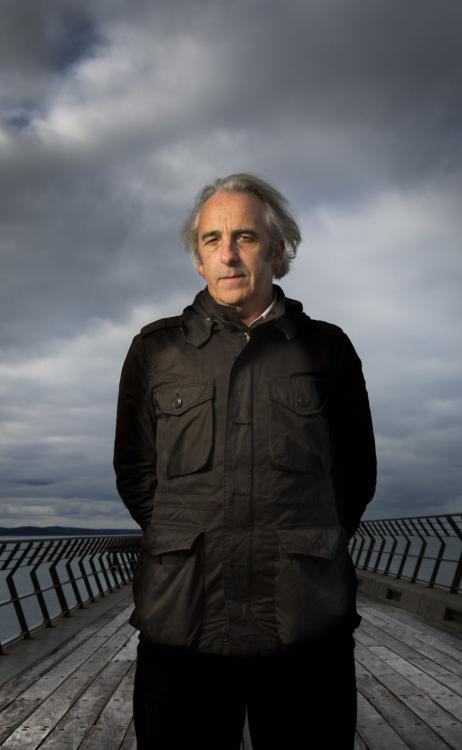
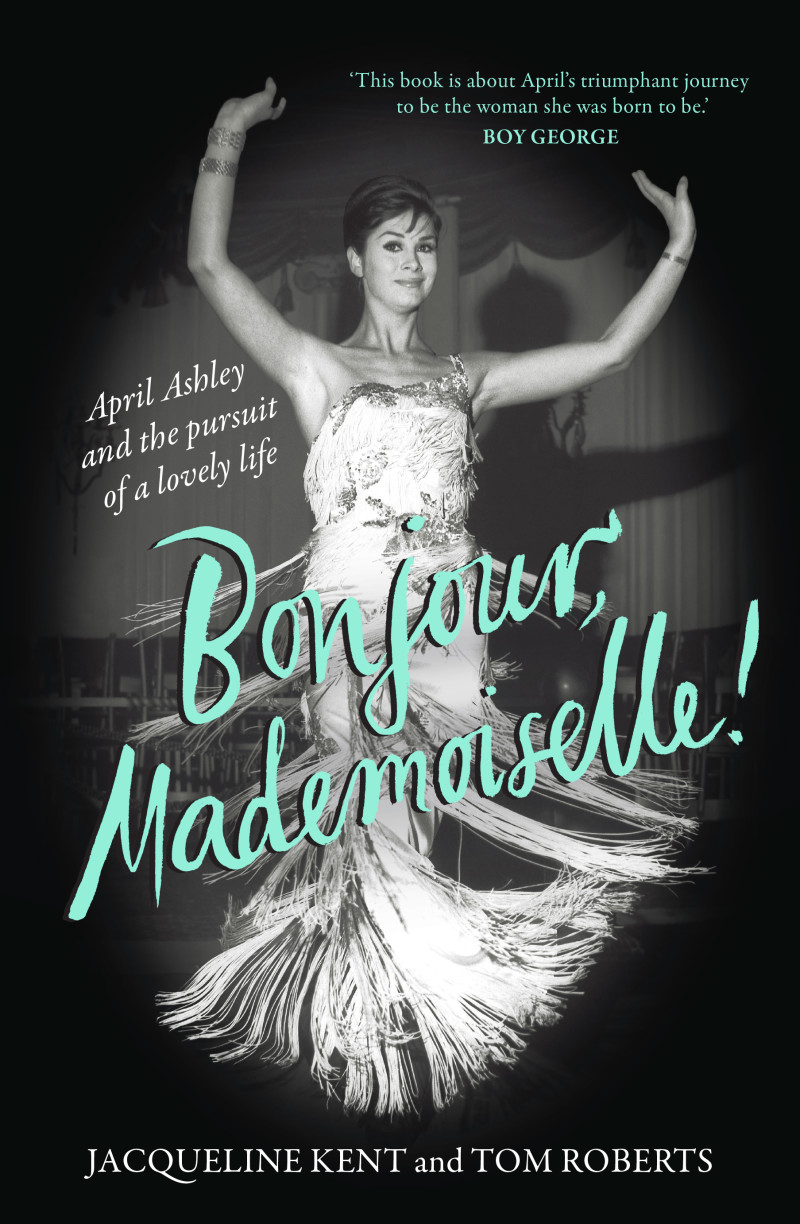
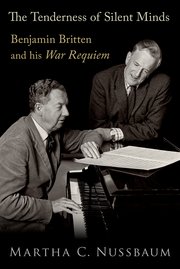
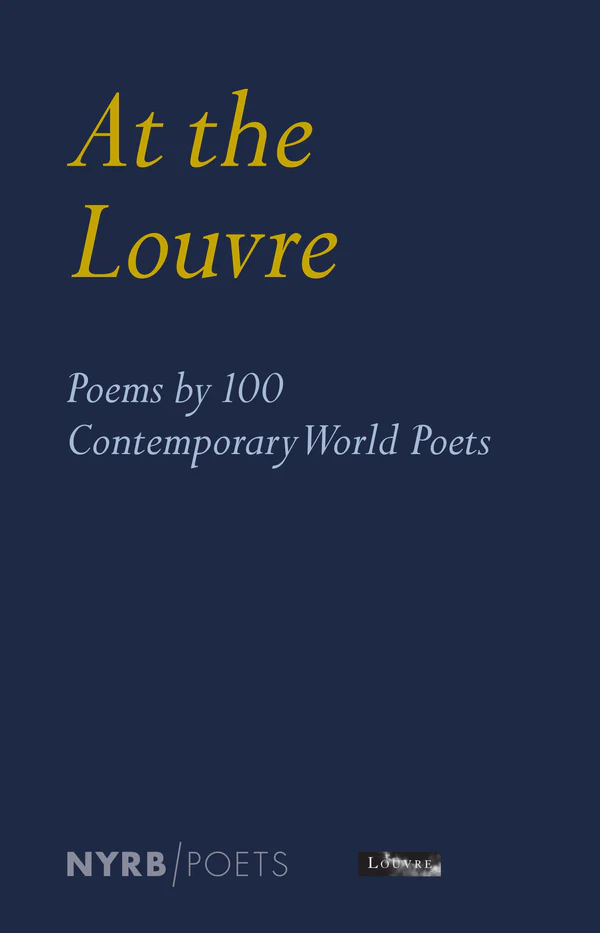



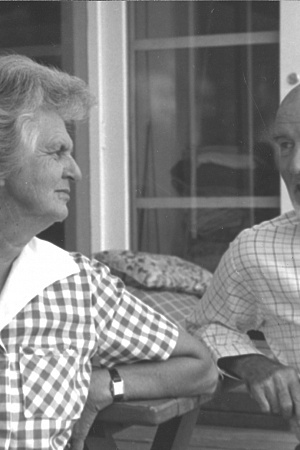




Leave a comment
If you are an ABR subscriber, you will need to sign in to post a comment.
If you have forgotten your sign in details, or if you receive an error message when trying to submit your comment, please email your comment (and the name of the article to which it relates) to ABR Comments. We will review your comment and, subject to approval, we will post it under your name.
Please note that all comments must be approved by ABR and comply with our Terms & Conditions.